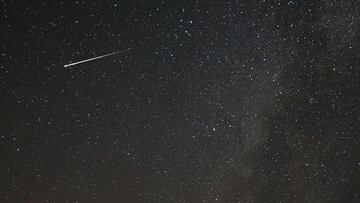LATEST NEWS
Perseid shower: what is it and what is the cause of this natural phenomenon?
Perseid meteor shower is set to sprinkle over the Earth’s skies. Here’s all you need to know.

Every year around late July and August, the skies light up with what we call the Perseid meteor shower, a natural phenomenon that has captured the minds of those looking up.
What is a meteor shower?
Meteors are known by many as shooting stars, but this is a common fallacy: they aren’t actually stars at all. In fact, meteors are, according to The Planetary Society, “streaks of light in the sky caused by dust and sand-sized rocks burning up as they hit Earth’s upper atmosphere at very high speeds”.
We normally pass through such dust clouds on a regular basis, but the Perseid cloud is an annual treat that we can all enjoy from the right location. As the Earth hurtles around the sun at 67,000 miles per hour, every August our humble rock passes through the cloud of dust and debris left behind by comet Swift-Tuttle.
The year 1992 was when we last saw the parent comet of this cloud, but with its 133-year orbit carrying it out beyond Pluto, we won’t see it again until 2125.
Why is it called the Perseid meteor shower? What does it mean?
Given we pass through these clouds all the time, it helps to name them so that they can be recognised and studied. Naming conventions for meteor showers are determined by their radiant, which is the closest constellation that their meteors appear to come from.
Perseus is located in the general direction of the meteors in this particular shower, although modern times have seen the location shift towards both Cassiopeia and Camelopardalis.
What is the difference between a meteor and a meteorite?
Great question, dear reader, but it’s even better than that. We’ve also got meteoroids, which is the name for the object while it is located in space. The brief moment that it enters into our atmosphere, we call it a meteor - the typical, visible streak of light that we see flash as it burns up.
If the heat doesn’t do away with the debris and the determined object survives and lands on Earth, it’s then called a meteorite.
This year, the next Perseids will peak around the night of August 12 and before dawn on August 13.






